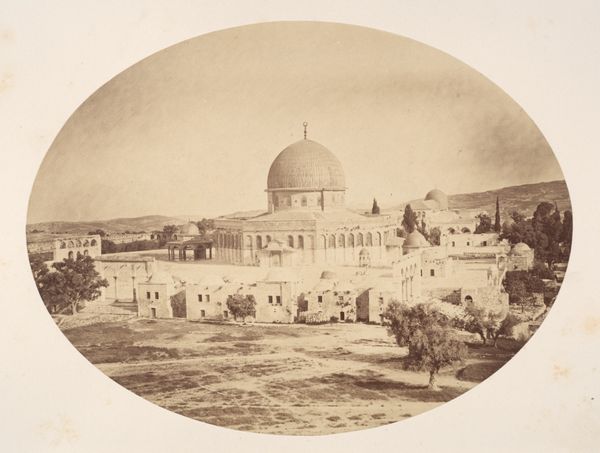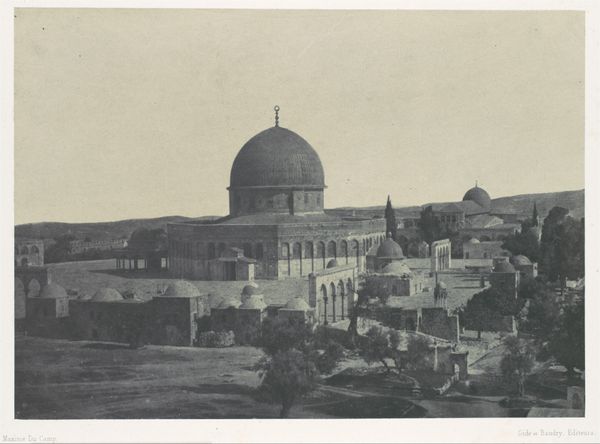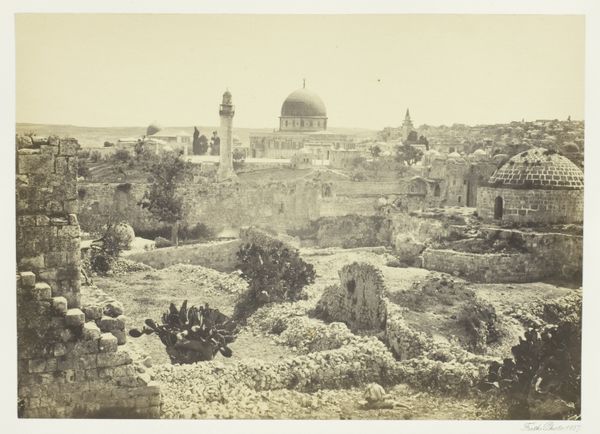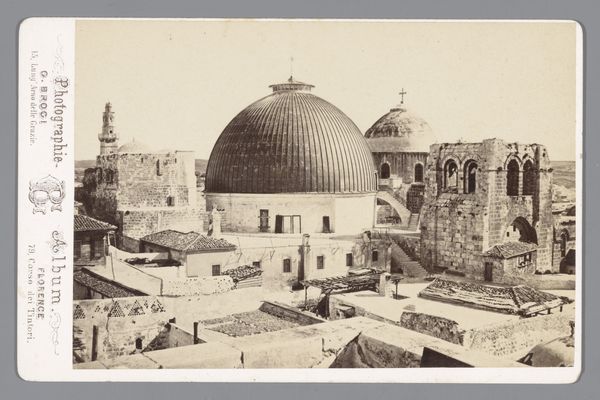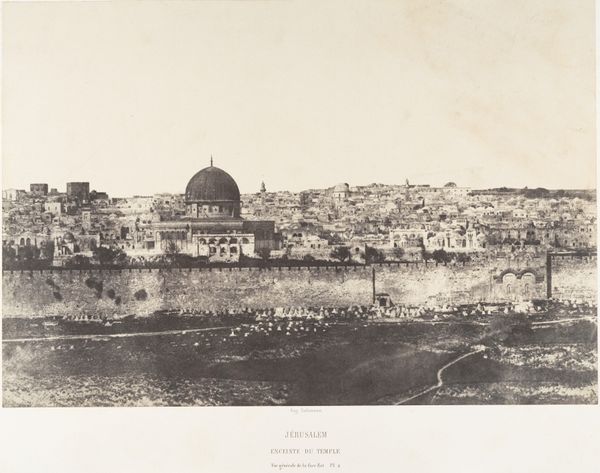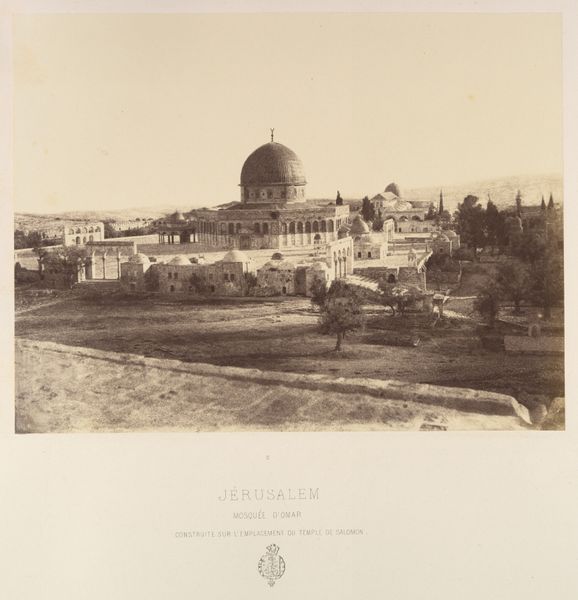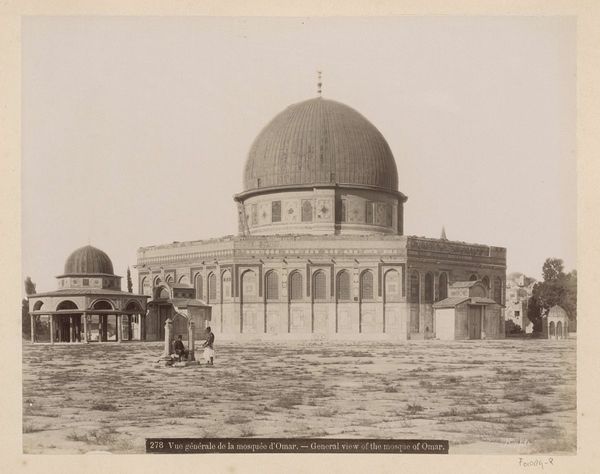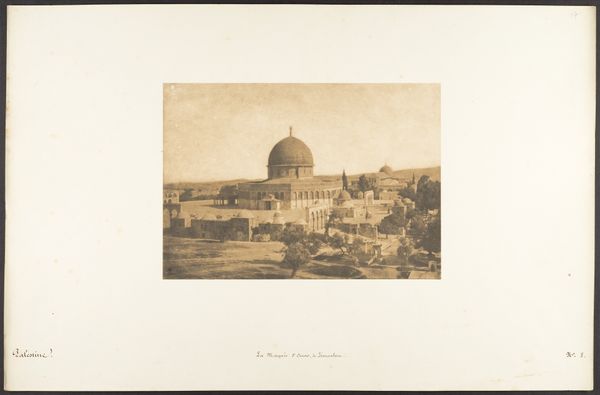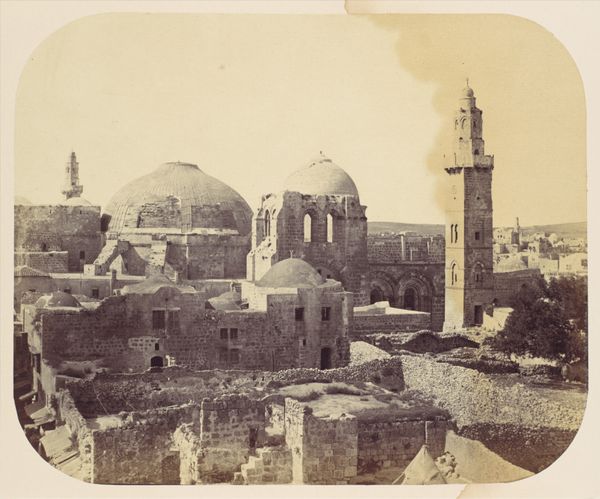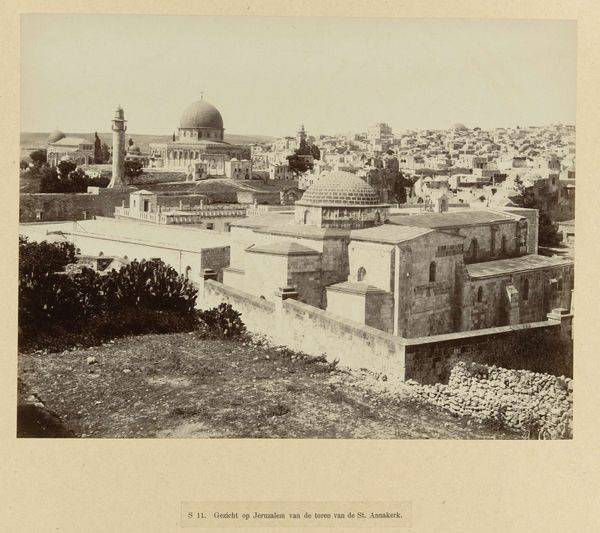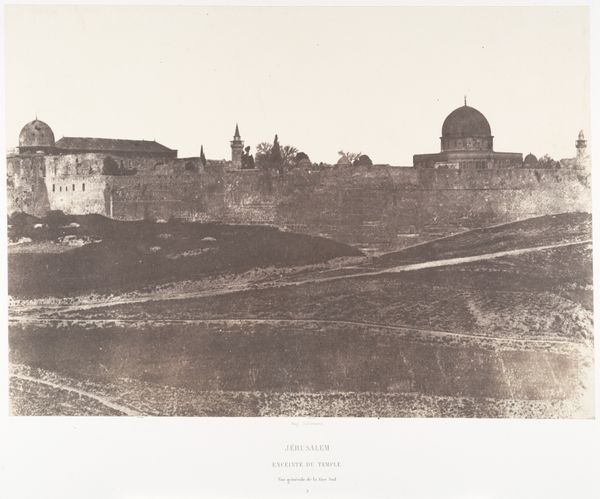
Jérusalem, Mosquée d'Omar, côté Nord, Intérieur de l'enceinte 1854 - 1859
0:00
0:00
photography, architecture
#
landscape
#
outdoor photography
#
photography
#
historical photography
#
arch
#
19th century
#
islamic-art
#
architecture
Dimensions: Image: 23.4 x 32.8 cm (9 3/16 x 12 15/16 in.) Mount: 44.5 x 59.8 cm (17 1/2 x 23 9/16 in.)
Copyright: Public Domain
Curator: I find myself immediately drawn to the weight of history in this photograph; it’s almost palpable. Editor: And I am fascinated by that grand dome—its shape speaks of a serene strength. This is a photograph taken by Auguste Salzmann, between 1854 and 1859, depicting the northern side of the Mosque of Omar in Jerusalem, as it stood then. Curator: Salzmann's work during this period is vital to our understanding of how the West viewed Jerusalem during a time of increasing colonial interest in the region. His photographs served not only as documentation, but as tools of cultural understanding, if heavily biased by European attitudes. Editor: Precisely, the repeating arches symbolize continuity, echoing classical forms adapted through the centuries within Islamic architecture. This particular monument is full of memory as well. That celestial sphere atop is a declaration. Curator: This image was created during a time of great shifts in photographic technology; the detail captured reflects Salzmann’s technical skill. The play of light and shadow invites the viewer to truly study the details of the building's facade, allowing for a more profound reflection. How were such works put into practice and disseminated is another facet of the era it came from. Editor: It's remarkable to see this building almost two centuries later; the power of place endures beyond any political agenda it was tied to. Curator: True, photography offered Europeans a tangible grasp on faraway lands, shaping perspectives that carried socio-political consequences—both advancing knowledge, and supporting agendas. Editor: Salzmann certainly imprinted the feeling of a sacred space on fragile photographic paper; one that can convey meaning beyond passing time and social function. Curator: Looking at it now makes me want to reflect on how much our perceptions of historic sites have been mediated, even constructed, through such influential visuals. Editor: The interplay of light and geometry here speaks profoundly of human aspiration and divine resonance—still echoing after more than one and a half centuries.
Comments
No comments
Be the first to comment and join the conversation on the ultimate creative platform.
